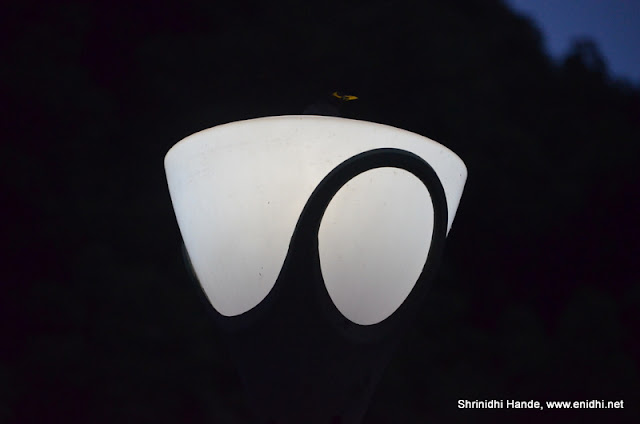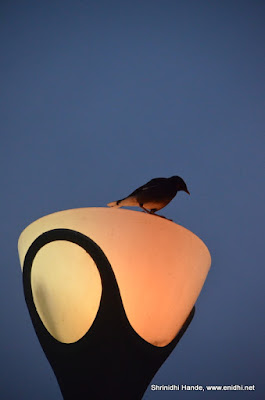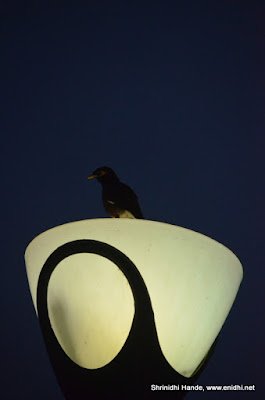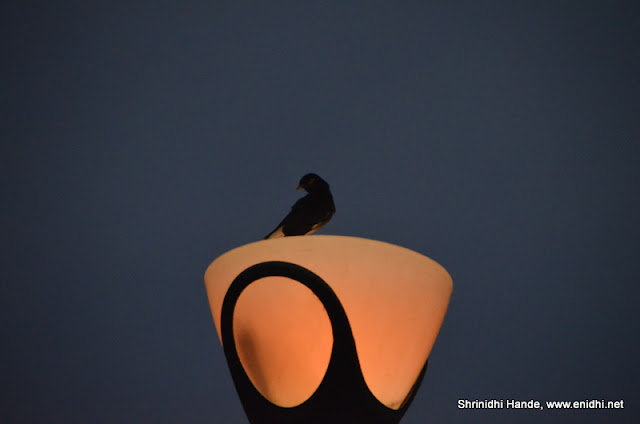Darter Photography Workshop-Why you should attend one!
I have been taking photographs for 15 years now. During my college days I had a Rs 150 pure mechanical fixed lens roll camera- with a plastic body, a shutter release button, a knob to rotate the film roll for next click and a button to flip open the backside (to take out/replace film roll). It also had a counter that said how many clicks are complete in that roll. Each time I finish a Roll I had to spend Rs 300-450 in developing it and few more to scan it and get it online.
After my job I picked up a Sony DSC H50. This had lots of controls, pretty good zoom. I did spend some time reading the manual, understanding basic concepts like shutter speed, ISO etc and I thought I have learnt enough to take decent photographs. The thought of attending a proper course in photography either didn’t occur at that time or was dismissed as too expensive/not needed for me. 5 years ago I bought my first DSLR- Nikon 5100, which is still with me. This had much more controls, which I started experimenting during trips. But most of trips were with packed schedule- I had to compromise on something or the other- like if I carry tripod, then I will compromise on mobility and speed, ending up exploring less. If I try to spend too much time at one attraction- searching for more angles and things to photograph, I would have no time left to visit other interesting places in town- so it is again compromise between “See few things in detail and take more pictures” vs “explore more attractions at less time per spot”. So when I had to decide between “Spend more time at a place, try to get that perfect shot” vs “See what best you can get in limited time and move-on” it was more convenient to do the later. I would take 4-5 photos per attraction, with some variation in perspective, angle and setting that I could think of at that moment and move on to next. Once back, I would only have time to resume by full time job and other things, so won’t have time for extensive post processing. Usually I pickup one or two best clicks from the 4-5 that I clicked, use them for my blog as is and move on. The process of “thinking of a story before clicking- planning our click with precision and then working on the picture till I get the story right” was too time consuming and complicated for me to get into.
Thanks to a decent camera and lots of custom modes (such as sunset, portrait, landscape etc) and whatever bare minimum skills I had so far, I did get decent photos from all my trips- at least I thought so. But then, deep within, I knew I could have done better. Great photography is a combination of multiple things- good equipment, photographer’s skills and visualization, practice, patience and a bit of luck. After a same tour or a photowalk, different people produce same subject in different perspectives- many of them much better than plain vanilla pic I had clicked. So there was room for improvement, to click things differently. If I had better skills, more time and little more planning, maybe I would have got home much better pictures from the places I had visited. Many of my blogger friends- Sankara C, DesiTraveler, Arun Bhat, Shande, Ram and others were always happy to teach me a thing or two whenever we met or traveled together. Though I was mulling on an idea of attending a proper photography workshop to learn the skills from an expert, that never materialized- mainly because I didn't prioritize it enough.
Finally, during first week of June it happened. I attended a 2 day basic photography workshop organized by Darter. Darter is a popular photography company founded by Arun Bhat and Sriram and are known for their photography tours and workshops. I had been to one of their photo exhibitions earlier and could see how good the photos were (details here).
Rest of the post details how the workshop went and my takeaways from it
Day 1 of the workshop involved helping participants understand the photography fundamentals
- We got an idea on full frame and APSC/DX sensors and why mobile cameras, even though they boast much higher mega pixel count, can't match a DSLR in quality (mobile phone sensors are usually one sixth the size of a full frame camera, thus their quality is limited)
-What is a histogram and how to read it
-What is an Aperture and how it works/affects photographs
-Depth of Field
-Basics of Metering
-Shutter speed and ISO
-Importance of RAW format
-Default values for various controls
Some basic photography principles
-Rule of Thirds (try to keep the subject at one third or two third of the frame and not at the centre)
-Rule of Space (leave space in the direction of motion)
-Rule of lines- leading lines
-Frame in a frame
-Symmetry
Mistakes to avoid- do not tilt horizontal lines, do not chop off body parts etc
What to look for while photographing
-Landscape: Look for colours, show scale, composition, reflections, clouds, sunrise/sunset
-Nature/Wildlife- Isolate subject, show behavior, freeze the moment
There was enough practice session during the session with toys as subjects.
On Day Two we assembled at Lalbagh at 6 AM. Next few hours were spent on practicals- shooting people and objects in Lalbagh, putting previous day's lessons into practice. This was followed by evaluation of our photographs and few tips on post processing. A few things-such as brightness, tilt, crop, colour etc can be adjusted in post processing, but certain aspects- like focus can't be adjusted if we get it wrong while clicking. Cropping can compensate for zoom in some cases but only marginally and that too at the risk of losing objects in the periphery of the frame. Workshop ended post lunch on Sunday (Day 2).
Our mentor Sriram MV showed many of their photos and explained how they were clicked and so on. We were asked to identify mistakes in some of the pics, we were shown how to avoid certain mistakes and so on. The session was interactive. Sriram is renowned wild life photographer and his photos of Agumbe and elsewhere were highly inspirational to say the least.
Some photos that I clicked during and after the workshop:
Rule of thirds
Depth of Field-Java Sparrow at HK park
The very next day after the workshop, I saw this bird sitting on a lamppost in Lalbagh. It was dark and visibility was poor. Below is what it was looking like in normal condition

But then, putting lessons to use, I changed EV to +2, which makes camera absorb more light and I got below shots. Now the lamp post and bird looked way better and was identified as one of the best pics from my camera that day.



Of course, they said “Give space in the direction of motion” but the stupid bird hadn’t attended the class and didn’t know in which direction to fly!
Frame in Frame-Hong Kong’s Old Railway tower captured from behind the pillars of culture house.
Symmetry
This picture of an taxiing aircraft at Macau Airport- Yes, not 100% symmetric- because the pilot was not willing to wait until I check the shot for perfection and retry…
2. Do not point the camera direct to sunlight. Looks like most of the sunset/sunrise skywatch pictures I had taken weren't photographically right
3. Perspective is important. Instead of conventional shot (chest level) try different angles.
4. The story- or how you visualize a subject or a scene is entirely up to you- no one can teach that. If you get an idea how you need the photo to be, then adjusting the camera to get the desired output becomes easier. (Camera setting adjustment would come naturally after some practice, just like how your body gets used to driving, but visualization needs to be learnt and exercised for every click)
5. How much post processing should be done depends on the purpose- beyond certain limit it ceases to be a photograph and will look more like a painting or artwork, if modified too much
6. It is important to know what can be adjusted in post processing vs what can't be.
First thing many people do after buying a DSLR is to open a photography page on Facebook. I suggest new camera owners spend some time learning basic skills and strongly recommend joining a workshop and doing photowalks. (FYI- I had strong urge to launch Shrinidhi Hande Photography, eNidhi Auto, eNidhi Reviews and Enidhi India (and international) Travel Blog. Instead, I just have one page on facebook- show some love)
With cameras offering so many default modes, anyone can click things in front of them. With multi mega pixel mobile cameras, everyone is a photographer now. Attending these workshops will help you get that edge over other photographs or photographers, by avoiding basic mistakes and adopting various principles/techniques to make the normal picture better. In today's world of Instagram, you definitely need more desirable pictures.
After the workshop-
Now I am lot wiser about the camera settings and photography rules and mistakes to avoid. I hope to be able to take better pics in future. I am trying to apply principles learnt in the workshop during my trips. But following points are still haunting me- these things only I need to fix or resolve, workshops can't help:
- Advantage of carrying a tripod vs mobility of managing without it
- Covering more places in a day vs covering few places but in much more detail (dawn and dusk are best times for landscape photographs, but we get only one sunrise and sunset per day).
- Time factor for post processing
- Time factor while shooting- trying for best shot myself with all manual controls vs select a best possible camera mode and let the camera do most of the work
Biggest aspect of all is being able to visualize a story in your mind before clicking- There is no instant solution for this. One should work continuously to improve imagination abilities and be able to think beyond what eyes can see. Following reputed photographers and observing their work helps cultivate better imagination.
If done well, photographs can help you earn good money. There are many platforms where you can put up your photos for sale. Good photographs in a blog post can help attract audience and retain them. I think money invested in photography can be recovered over time.
After my job I picked up a Sony DSC H50. This had lots of controls, pretty good zoom. I did spend some time reading the manual, understanding basic concepts like shutter speed, ISO etc and I thought I have learnt enough to take decent photographs. The thought of attending a proper course in photography either didn’t occur at that time or was dismissed as too expensive/not needed for me. 5 years ago I bought my first DSLR- Nikon 5100, which is still with me. This had much more controls, which I started experimenting during trips. But most of trips were with packed schedule- I had to compromise on something or the other- like if I carry tripod, then I will compromise on mobility and speed, ending up exploring less. If I try to spend too much time at one attraction- searching for more angles and things to photograph, I would have no time left to visit other interesting places in town- so it is again compromise between “See few things in detail and take more pictures” vs “explore more attractions at less time per spot”. So when I had to decide between “Spend more time at a place, try to get that perfect shot” vs “See what best you can get in limited time and move-on” it was more convenient to do the later. I would take 4-5 photos per attraction, with some variation in perspective, angle and setting that I could think of at that moment and move on to next. Once back, I would only have time to resume by full time job and other things, so won’t have time for extensive post processing. Usually I pickup one or two best clicks from the 4-5 that I clicked, use them for my blog as is and move on. The process of “thinking of a story before clicking- planning our click with precision and then working on the picture till I get the story right” was too time consuming and complicated for me to get into.
Thanks to a decent camera and lots of custom modes (such as sunset, portrait, landscape etc) and whatever bare minimum skills I had so far, I did get decent photos from all my trips- at least I thought so. But then, deep within, I knew I could have done better. Great photography is a combination of multiple things- good equipment, photographer’s skills and visualization, practice, patience and a bit of luck. After a same tour or a photowalk, different people produce same subject in different perspectives- many of them much better than plain vanilla pic I had clicked. So there was room for improvement, to click things differently. If I had better skills, more time and little more planning, maybe I would have got home much better pictures from the places I had visited. Many of my blogger friends- Sankara C, DesiTraveler, Arun Bhat, Shande, Ram and others were always happy to teach me a thing or two whenever we met or traveled together. Though I was mulling on an idea of attending a proper photography workshop to learn the skills from an expert, that never materialized- mainly because I didn't prioritize it enough.
Finally, during first week of June it happened. I attended a 2 day basic photography workshop organized by Darter. Darter is a popular photography company founded by Arun Bhat and Sriram and are known for their photography tours and workshops. I had been to one of their photo exhibitions earlier and could see how good the photos were (details here).
Rest of the post details how the workshop went and my takeaways from it
Day 1 of the workshop involved helping participants understand the photography fundamentals
- We got an idea on full frame and APSC/DX sensors and why mobile cameras, even though they boast much higher mega pixel count, can't match a DSLR in quality (mobile phone sensors are usually one sixth the size of a full frame camera, thus their quality is limited)
-What is a histogram and how to read it
-What is an Aperture and how it works/affects photographs
-Depth of Field
-Basics of Metering
-Shutter speed and ISO
-Importance of RAW format
-Default values for various controls
Some basic photography principles
-Rule of Thirds (try to keep the subject at one third or two third of the frame and not at the centre)
-Rule of Space (leave space in the direction of motion)
-Rule of lines- leading lines
-Frame in a frame
-Symmetry
Mistakes to avoid- do not tilt horizontal lines, do not chop off body parts etc
What to look for while photographing
-Landscape: Look for colours, show scale, composition, reflections, clouds, sunrise/sunset
-Nature/Wildlife- Isolate subject, show behavior, freeze the moment
There was enough practice session during the session with toys as subjects.
On Day Two we assembled at Lalbagh at 6 AM. Next few hours were spent on practicals- shooting people and objects in Lalbagh, putting previous day's lessons into practice. This was followed by evaluation of our photographs and few tips on post processing. A few things-such as brightness, tilt, crop, colour etc can be adjusted in post processing, but certain aspects- like focus can't be adjusted if we get it wrong while clicking. Cropping can compensate for zoom in some cases but only marginally and that too at the risk of losing objects in the periphery of the frame. Workshop ended post lunch on Sunday (Day 2).
Our mentor Sriram MV showed many of their photos and explained how they were clicked and so on. We were asked to identify mistakes in some of the pics, we were shown how to avoid certain mistakes and so on. The session was interactive. Sriram is renowned wild life photographer and his photos of Agumbe and elsewhere were highly inspirational to say the least.
Some photos that I clicked during and after the workshop:
Rule of thirds
Depth of Field-Java Sparrow at HK park
The very next day after the workshop, I saw this bird sitting on a lamppost in Lalbagh. It was dark and visibility was poor. Below is what it was looking like in normal condition

But then, putting lessons to use, I changed EV to +2, which makes camera absorb more light and I got below shots. Now the lamp post and bird looked way better and was identified as one of the best pics from my camera that day.



Of course, they said “Give space in the direction of motion” but the stupid bird hadn’t attended the class and didn’t know in which direction to fly!
Frame in Frame-Hong Kong’s Old Railway tower captured from behind the pillars of culture house.
Symmetry
This picture of an taxiing aircraft at Macau Airport- Yes, not 100% symmetric- because the pilot was not willing to wait until I check the shot for perfection and retry…
Using shutter speed for effects- below photo clicked at the entrance of Hong Kong Disney Wold. Reducing shutter speed gives a more milky effect.
Converging lines- somewhere near Macau outer harbor.
Some additional key takeaways
1. There is no need to service the camera frequently unless it develops a problem. Service center will only clean it and return, there aren’t much serviceable parts inside.2. Do not point the camera direct to sunlight. Looks like most of the sunset/sunrise skywatch pictures I had taken weren't photographically right
3. Perspective is important. Instead of conventional shot (chest level) try different angles.
4. The story- or how you visualize a subject or a scene is entirely up to you- no one can teach that. If you get an idea how you need the photo to be, then adjusting the camera to get the desired output becomes easier. (Camera setting adjustment would come naturally after some practice, just like how your body gets used to driving, but visualization needs to be learnt and exercised for every click)
5. How much post processing should be done depends on the purpose- beyond certain limit it ceases to be a photograph and will look more like a painting or artwork, if modified too much
6. It is important to know what can be adjusted in post processing vs what can't be.
With cameras offering so many default modes, anyone can click things in front of them. With multi mega pixel mobile cameras, everyone is a photographer now. Attending these workshops will help you get that edge over other photographs or photographers, by avoiding basic mistakes and adopting various principles/techniques to make the normal picture better. In today's world of Instagram, you definitely need more desirable pictures.
After the workshop-
Now I am lot wiser about the camera settings and photography rules and mistakes to avoid. I hope to be able to take better pics in future. I am trying to apply principles learnt in the workshop during my trips. But following points are still haunting me- these things only I need to fix or resolve, workshops can't help:
- Advantage of carrying a tripod vs mobility of managing without it
- Covering more places in a day vs covering few places but in much more detail (dawn and dusk are best times for landscape photographs, but we get only one sunrise and sunset per day).
- Time factor for post processing
- Time factor while shooting- trying for best shot myself with all manual controls vs select a best possible camera mode and let the camera do most of the work
Biggest aspect of all is being able to visualize a story in your mind before clicking- There is no instant solution for this. One should work continuously to improve imagination abilities and be able to think beyond what eyes can see. Following reputed photographers and observing their work helps cultivate better imagination.
If done well, photographs can help you earn good money. There are many platforms where you can put up your photos for sale. Good photographs in a blog post can help attract audience and retain them. I think money invested in photography can be recovered over time.
















Wonderful... so glad the Darter Photography Workshop was useful..
ReplyDeleteNow if birds also understood the same :)
Yes it was...
ReplyDeleteI am willing to pardon the bird :)
I so identify with your posts! But after quitting my job I have lesser excuses of not doing things properly!
ReplyDeleteThanks Mridula. Best wishes for the women only tour!
ReplyDeleteWell... when you travel often this photography urge comes to us since we want to remember the movements and narrate the story. I am provably the worth photographer):... should take a photography course and a good camera myself... nice write up!!
ReplyDeleteVery informative and useful post, Shrinidhi. Have only recently got a DSLR and to be honest, all those different settings sometimes appear wee bit intimidating.
ReplyDelete@Ragini
ReplyDeleteThanks. I think you have a Sony Alpha, which has way more controls and options than ordinary DSLR... Make the most of it
@Maria- true. Thanks.
good to know about this ! let's catch-up for next trip dedicated to photography :)
ReplyDeleteSure Sandeep
ReplyDeleteGreat to read, Thanks for sharing :)
ReplyDeleteGreat! Will look forward to a lot more beautiful images here!
ReplyDeleteHave bookmarked this one...very useful post. I have been meaning to attend the Darter workshop but have had some prior engagements clashing with those dates. I have to figure out the next one.
ReplyDelete@Ami-best wishes. Do attend.
ReplyDelete@Arun- thanks
Such an informative post Shrinidhi initially starting with the Auto mode now I finally proudly experiment with Manual ones 😅 The Tips and Takeaways are ultimate.
ReplyDelete